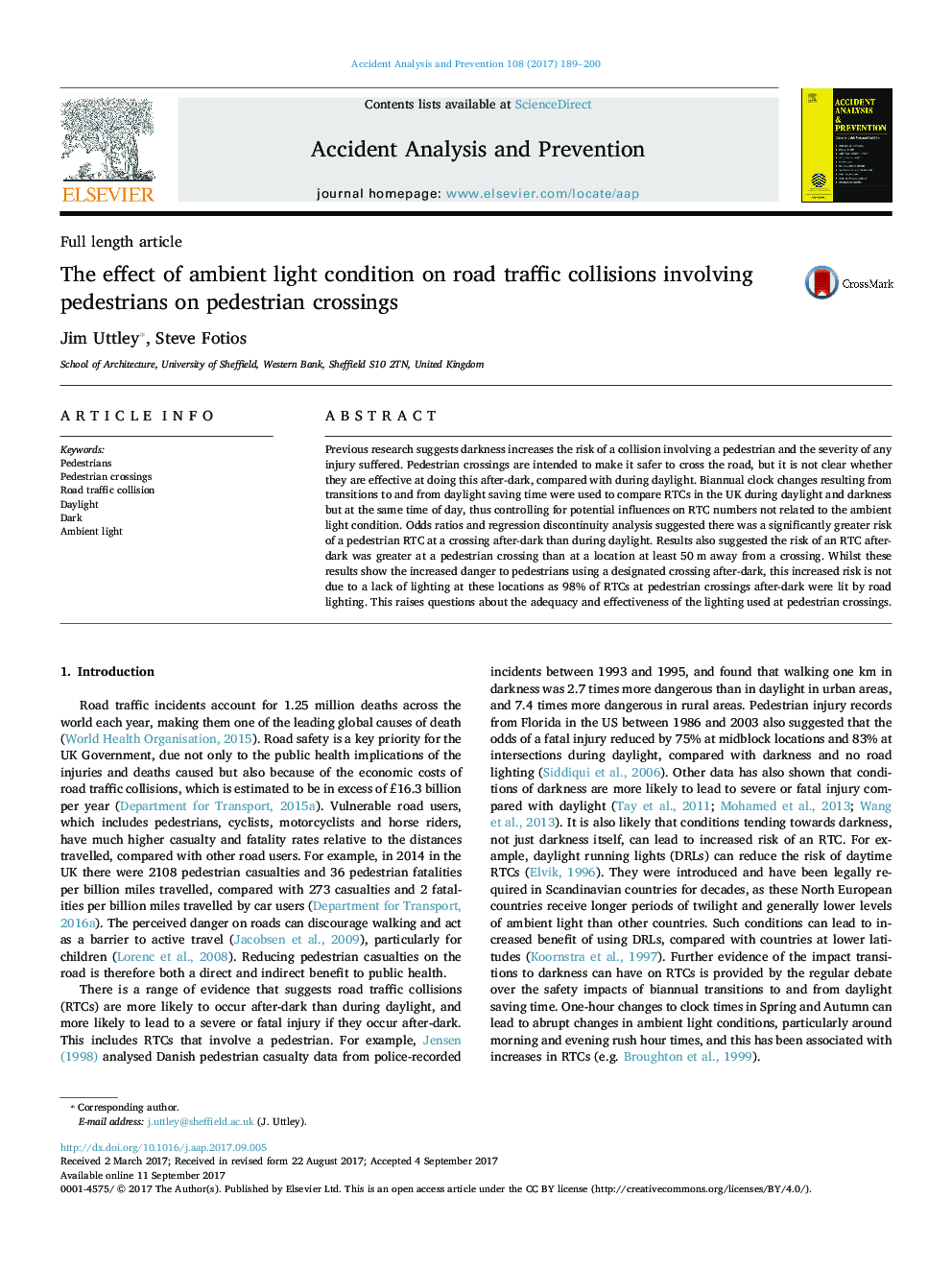| Article ID | Journal | Published Year | Pages | File Type |
|---|---|---|---|---|
| 4978520 | Accident Analysis & Prevention | 2017 | 12 Pages |
â¢Daylight and after-dark RTCs compared using daylight saving clock changes.â¢Increased risk of pedestrian RTC at crossing after-dark compared to daylight.â¢Risk of pedestrian RTC after-dark greater at crossing than at other locations.â¢Research raises questions about adequacy of road lighting at pedestrian crossings.
Previous research suggests darkness increases the risk of a collision involving a pedestrian and the severity of any injury suffered. Pedestrian crossings are intended to make it safer to cross the road, but it is not clear whether they are effective at doing this after-dark, compared with during daylight. Biannual clock changes resulting from transitions to and from daylight saving time were used to compare RTCs in the UK during daylight and darkness but at the same time of day, thus controlling for potential influences on RTC numbers not related to the ambient light condition. Odds ratios and regression discontinuity analysis suggested there was a significantly greater risk of a pedestrian RTC at a crossing after-dark than during daylight. Results also suggested the risk of an RTC after-dark was greater at a pedestrian crossing than at a location at least 50Â m away from a crossing. Whilst these results show the increased danger to pedestrians using a designated crossing after-dark, this increased risk is not due to a lack of lighting at these locations as 98% of RTCs at pedestrian crossings after-dark were lit by road lighting. This raises questions about the adequacy and effectiveness of the lighting used at pedestrian crossings.
